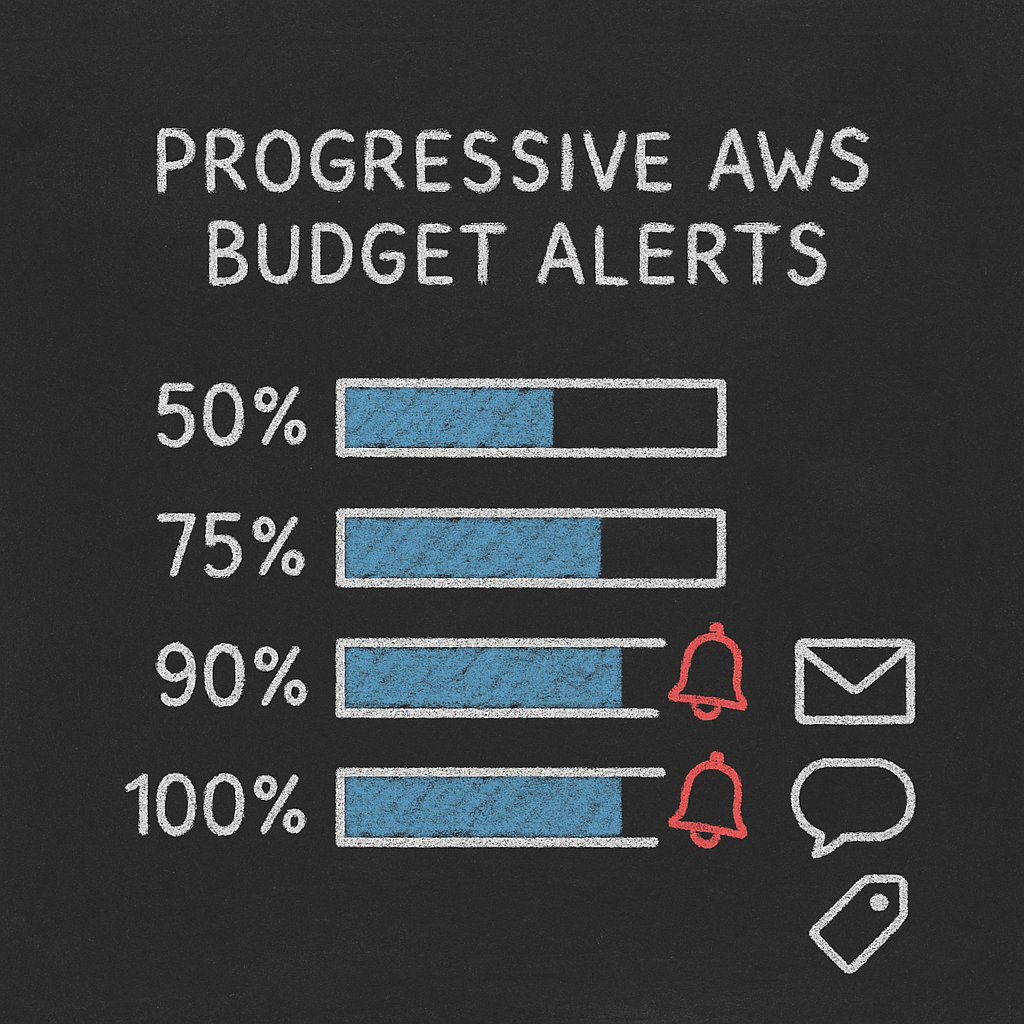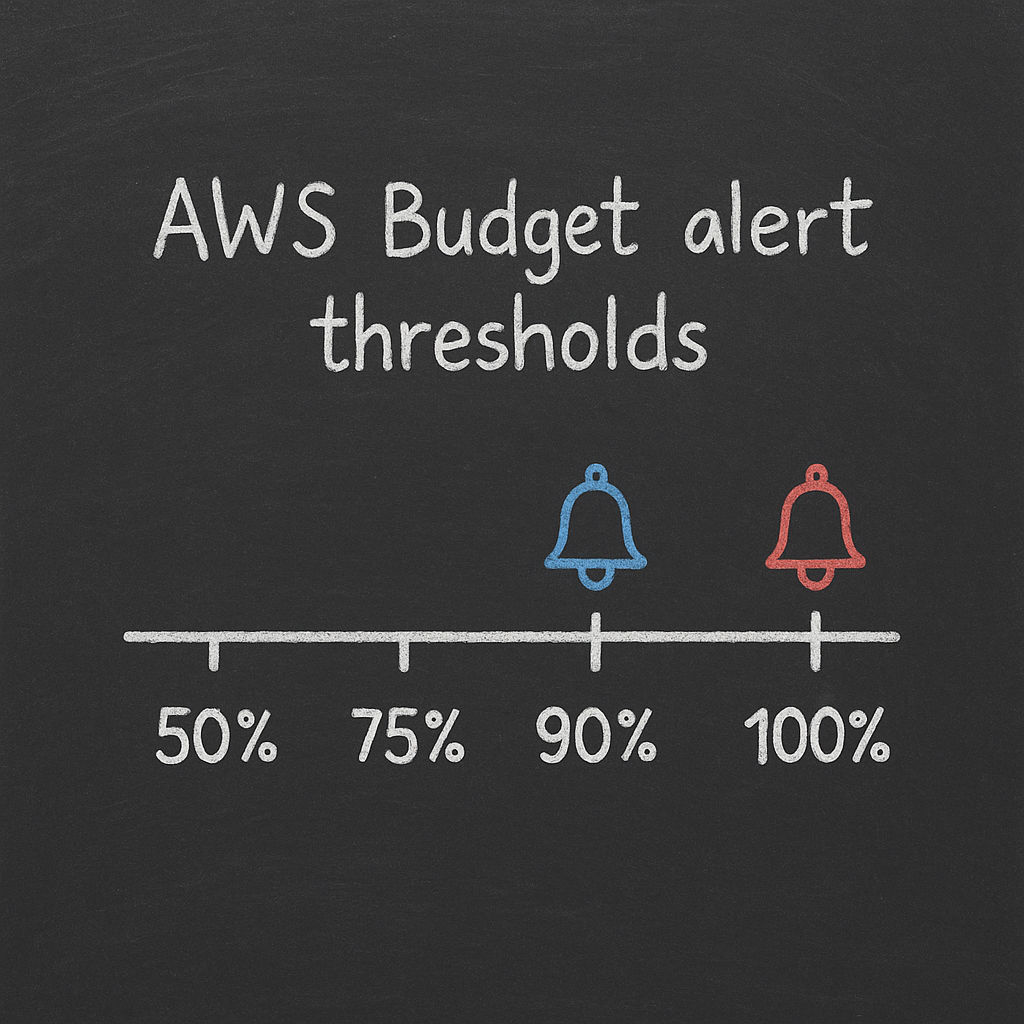AWS Billing Best Practices: Optimize Cloud Spend Without Extra Engineering Effort
Are you watching your AWS costs spiral upward while your engineering team is already stretched thin? You’re not alone. Most organizations waste 30-45% of their cloud spend—but implementing best practices doesn’t have to drain your engineering resources.
Key AWS Billing Strategies for Immediate Impact
Setting Effective AWS Budgets
Creating proper AWS Budgets is your first line of defense against cloud overspend. AWS supports six budget types including cost, usage, and coverage for Reserved Instances and Savings Plans—giving you comprehensive tracking options for different optimization strategies.
When setting up budgets, remember:
- Control access carefully - Limit who can create and modify budgets to maintain governance
- Use appropriate metrics - AWS Budgets can track various cost types including blended, unblended, amortized costs—with options to include or exclude discounts, refunds, and taxes
- Plan for data latency - AWS Budgets information updates up to three times daily, with updates typically occurring 8-12 hours after the previous update
Each AWS budget supports up to 10 notifications, with each notification allowing 1 SNS subscriber and up to 10 email subscribers per notification.
Implementing Automated Budget Actions
Budget Actions transform passive alerts into active cost control. When thresholds are exceeded, you can automatically apply IAM policies to restrict permissions, implement Service Control Policies (SCPs) to prevent new resource provisioning, or target specific EC2 or RDS instances.
AWS provides two managed policies specifically for budget actions:
AWSBudgetsActionsWithAWSResourceControlPolicy- For implementing resource controlsAWSBudgetsReadOnlyAccess- For viewing budget information without modification rights
Setting Actionable Alerts
Effective alerts provide enough notice to take action before overspending occurs. When configuring AWS Budget alerts:
Set progressive thresholds - Create notifications at 50%, 75%, 90%, and 100% of your budget. Use SNS topics for integration - Connect with Slack, email, or ticketing systems to ensure alerts reach the right teams. Include resource owners - Tag resources properly so alerts include the responsible teams.

Remember that AWS Budgets does not enforce hard spending limits and serves as a monitoring tool rather than a spending prevention mechanism without additional automation.
Implementing the Four Pillars of AWS Cost Optimization
AWS’s Well-Architected Framework identifies four key pillars for cost optimization:

1. Right-Sizing Resources
Right-sizing involves matching instance types and resources to your workload requirements. Run regular utilization reports to identify over-provisioned resources, consider Hykell’s automated EC2 optimization for seamless right-sizing without performance impact, and implement Auto Scaling to automatically adjust capacity based on current demand.
2. Increasing Elasticity
Move from static to dynamic resource allocation by scheduling development environments to shut down outside business hours, using Lambda functions to automate start/stop schedules, and implementing AWS Auto Scaling groups with proper scaling policies.
3. Leveraging the Right Pricing Model
AWS offers multiple purchasing options to reduce costs:
- On-Demand: Pay standard rates with no commitment
- Reserved Instances: Commit to 1-3 years for up to 72% savings
- Savings Plans: Commit to consistent usage for significant discounts
- Spot Instances: Utilize spare capacity for up to 90% off On-Demand prices
4. Optimizing Storage
Storage costs can silently accumulate if not properly managed. Move infrequently accessed data to lower-cost storage tiers, implement lifecycle policies for automatic transitions, delete or archive outdated snapshots and backups, and consider optimizing EBS volumes for the right balance of performance and cost.
The Five Focus Areas for AWS Cost Management
Beyond the four pillars, AWS recommends five specific areas to focus your cost optimization efforts:
1. Cost-Effective Resources
Compare instance families and sizes for the best price-performance ratio, evaluate managed services vs. self-managed options, and consider gravitating workloads to regions with lower pricing when latency isn’t critical.
2. Matching Supply with Demand
Use Auto Scaling for dynamic workloads, implement predictive scaling for workloads with predictable patterns, and consider Kubernetes cost monitoring for container-based workloads to optimize pod placement and resource utilization.
3. Expenditure Awareness
Implement comprehensive tagging strategies for resource attribution, create dashboards for visualizing costs by department, project, or environment, and conduct regular cost review meetings with stakeholders.
4. Optimizing Over Time
Review AWS’s latest service offerings and pricing changes, regularly re-evaluate your architecture for cost optimization opportunities, and consider the Amazon AWS EDP for large-scale commitments.
5. Measuring Efficiency with KPIs
Track cost per transaction, customer, or deployment, compare cloud costs to business metrics like revenue, and establish baselines and set improvement targets.
Real-Time Cost Monitoring Best Practices
AWS’s native tools provide cost visibility, but with certain limitations:
- AWS Cost Explorer: Great for historical analysis but lacks real-time data
- AWS Budgets: Updates only 2-3 times daily with 8-12 hour latency
- CloudWatch Billing Alarms: Limited to account-level monitoring
For more immediate visibility, use CloudWatch metrics for resource-level monitoring by creating custom dashboards for key resources, implement resource tagging for granular cost attribution, and consider third-party real-time monitoring solutions like Hykell’s real-time monitoring for immediate visibility into spending.
Optimizing Key AWS Resources
EC2 Instance Optimization
Right-size instances by matching CPU, memory, and storage to actual workload requirements. Use Compute Optimizer, AWS’s built-in recommendation engine, to identify savings opportunities. Consider Graviton instances, AWS’s ARM-based instances that offer better price-performance for compatible workloads. Implement Auto Scaling to scale capacity based on demand and avoid over-provisioning.
EBS Volume Optimization
EBS optimization often yields immediate savings with minimal effort. Choose the right volume type—gp3 volumes provide better performance at lower cost than gp2. Right-size volumes, as many EBS volumes are significantly over-provisioned. Delete unused snapshots since old snapshots incur ongoing storage costs. Consider optimized IOPS and throughput by configuring gp3 volumes with just the IOPS and throughput you need.
Kubernetes Cost Management
For container workloads on EKS or self-managed Kubernetes, implement cluster autoscaling to scale node groups based on pod demand. Use Spot Instances for appropriate workloads like non-critical or batch jobs. Consider Kubernetes cost monitoring solutions to provide container-level cost visibility, and optimize pod requests and limits to right-size resource requests and improve cluster efficiency.
Automating AWS Cost Optimization with Hykell
Implementing all these best practices requires significant time and expertise. Hykell provides automated AWS cost optimization that can deliver up to 40% savings without requiring ongoing engineering effort:
Key Features:
- Autopilot Savings: Automated optimizations that maintain performance while reducing costs
- Comprehensive Cost Audits: Identify underutilized resources and optimization opportunities
- Automated EBS & EC2 Optimization: Right-size resources without performance impact
- Kubernetes Cost Optimization: Optimize container workloads and cluster resources
- Real-Time Monitoring: Get immediate visibility into cloud spending
Unlike manual approaches that require ongoing maintenance, Hykell’s automated platform continually adapts to changing workloads, ensuring you maintain optimal cost-performance balance.
Next Steps for AWS Billing Optimization
Ready to implement AWS billing best practices? Start by auditing your current AWS environment for optimization opportunities. Implement proper budgets and alerts using AWS Budgets. Develop a tagging strategy for cost attribution. Right-size over-provisioned resources starting with EC2 and EBS. Consider automated solutions like Hykell to maintain ongoing optimization.
Remember that AWS cost management best practices evolve over time as new services and pricing options become available. Staying informed and proactive about your cloud costs is key to maximizing the value of your AWS investment.
Don’t let AWS costs spiral out of control while your engineering team focuses on core business needs. Implement these billing best practices and consider Hykell’s automated solutions to achieve significant savings with minimal effort.
See how much you could save on AWS by getting a free cost audit today—most organizations discover 30-40% in immediate savings opportunities.
